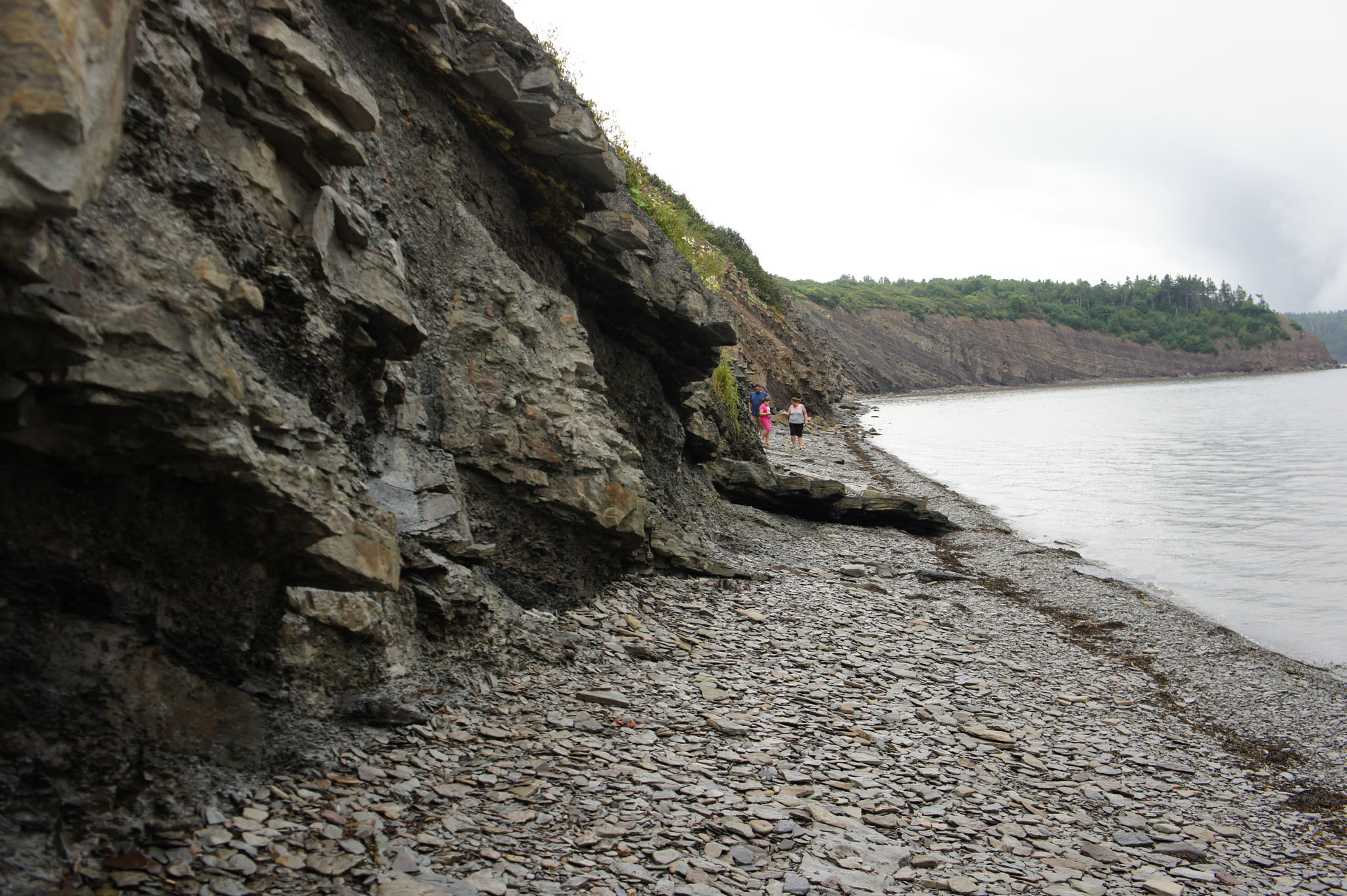抱抱 (Boris)
一縷陽光, 一刻悸動, 還有那會心的微笑...21天加拿大海洋省 (5) 第 6 日 - Joggins化石岩壁
Around the Maritimes in 21 Days (5) Day 6 - Joggins Fossil Cliffs
第六日 - Joggins化石岩壁
Joggins Fossil Cliffs
這天是二十一天中唯一的雨天, 不得已去了計劃外的Joggins化石博物館. 卻收獲了此行意外的驚喜.
Joggins化石岩壁是加拿大第十五個聯合國教科文組織世界自然文化遺產. 14.7公裏的海岸經過芬迪灣海潮強力的衝刷, 形成了陡峭的岩壁, 使地層中三億年前的化石得以露出. Joggins在三億年前曾是赤道附近的熱帶叢林. 化石以熱帶植物的根莖葉居多. 不要幻想在此地發現恐龍(1.5億年前)的化石, 三億年前四足動物才剛剛形成, 在陸地上還十分稀少.
以前在博物館看到不少化石, 隔著玻璃總有一種不真實的感覺. 也總覺得挖化石是科學家的工作. 沒想到Joggins的化石十分豐富, 在海岸或岩壁中, 你可以輕易地撿起一塊化石. 多數化石十分容易辨認. 有疑問時隨行的工作人員可以馬上幫忙解答.
親手發現化石的挑戰讓全家人興奮了很久. 親手觸摸三億年時光的奇妙感覺讓人久久回味.
唯一的遺憾是所有發現的化石都要交回博物館. 這也引來了八天後更大的驚喜.
Joggins Fossil Cliffs is Canada’s 15th UNESCO World Heritage Site. The Joggins Fossil Cliffs, a 6.89 square kilometers palaeontological site along the coast of Nova Scotia (eastern Canada), have been described as the “coal age Galápagos” due to their wealth of fossils from the Carboniferous period (354 to 290 million years ago). The rocks of this site are considered to be iconic for this period of the history of Earth and are the world’s thickest and most comprehensive record of the Pennsylvanian strata (dating back 318 to 303 million years) with the most complete known fossil record of terrestrial life from that time. These include the remains and tracks of very early animals and the rainforest in which they lived, left in situ, intact and undisturbed. With its 14.7 km of sea cliffs, low bluffs, rock platforms and beach, the site groups remains of three ecosystems: estuarine bay, floodplain rainforest and fire prone forested alluvial plain with freshwater pools. It offers the richest assemblage known of the fossil life in these three ecosystems with 96 genera and 148 species of fossils and 20 footprint groups. The site is listed as containing outstanding examples representing major stages in the history of Earth.
How fossils form? A fossil is any evidence of ancient life preserved in rocks. Most plants and animals never become fossils, because they are destroyed or decay first. To become a fossil, a plant or animal must be quickly buried by mud or other fine sediment. Soft parts usually rot away, so what get preserved? Animal bones and some tree trunks can turn to stone, as cells fill in with minerals. Plans usually form an imprint in stone of the original shapes, sometimes covered with a thin film of carbon.
Joggins had seasons of monsoon-like rains during the Coal Age. Streams would overflow their banks and flood the lowlands, burying plans and animals under layers of mud and sand. At the same time, the surface of the land gradually sank, allowing the buried life to be preserved.
1.Joggins Fossil Cliffs, Aug 9

2.Joggins Fossil Cliffs, Aug 9

3.Joggins Fossil Cliffs, Aug 9

4.Joggins Fossil Cliffs, Aug 9

5.Joggins Fossil Cliffs, Aug 9

6.Joggins Fossil Cliffs - Tree fossil, Aug 9

7.Joggins Fossil Cliffs - Root fossil, Aug 9

8.Joggins Fossil Cliffs - Tree fossil, Aug 9

待續...
相關連接:
21天加拿大海洋省 (5) 第 6 日 - Joggins化石岩壁
21天加拿大海洋省 (7) 第 8/9 日 - 狂怒角,水公園,魔術山,龍蝦鎮, PEI跨海大橋
21天加拿大海洋省 (9) 第 11/12 日 - Hector古船博物館, BELL紀念館
21天加拿大海洋省 (11) 第 14 日 - 化石博物館, 露易斯堡要塞
21天加拿大海洋省 (12) 第 15/16 日 - Halifax堡壘, Peggy Cove燈塔




